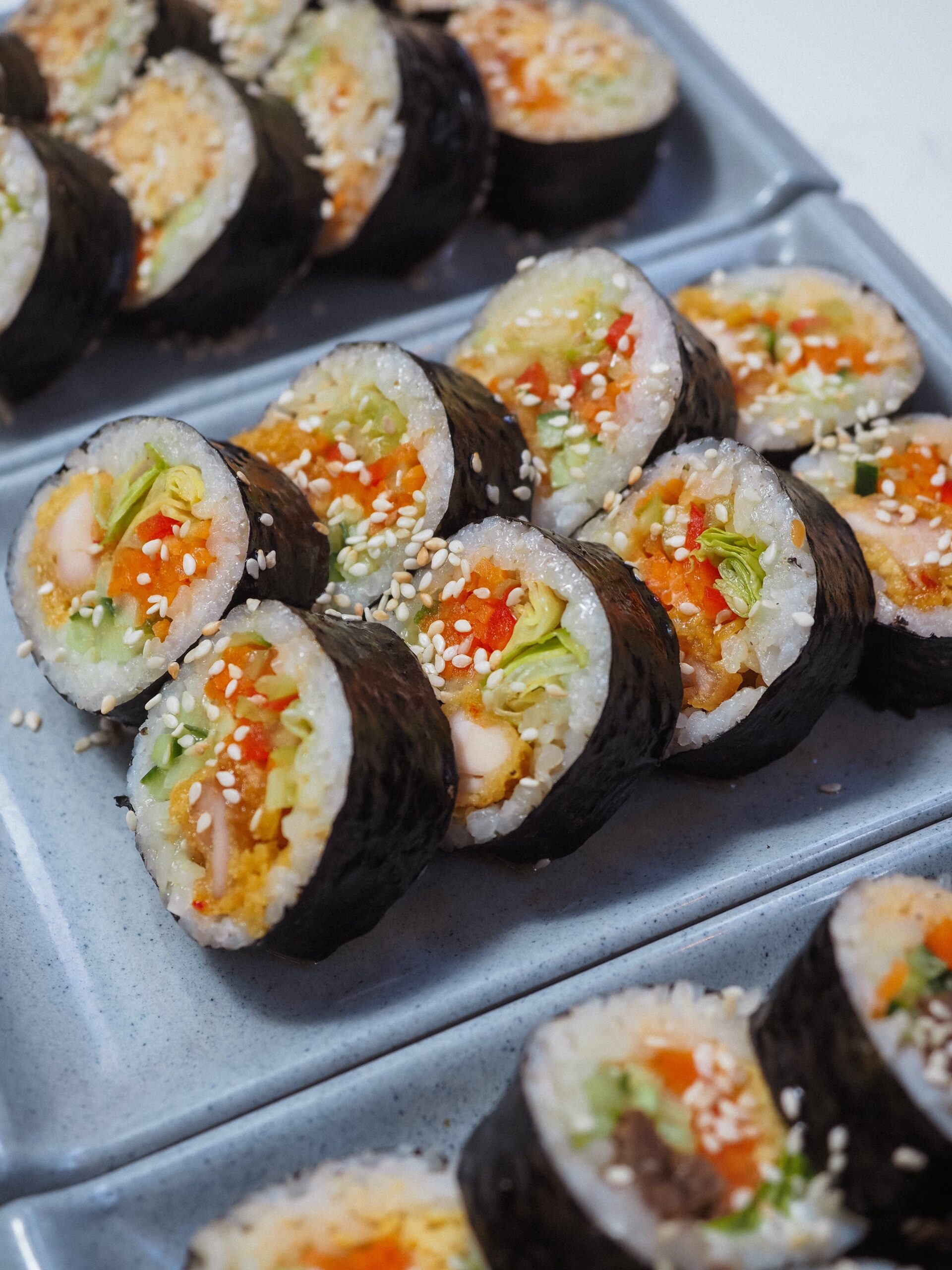Often called the Korean sushi, Kimbap is a Korean food that is made of seaweed or kim, seasoned rice or bap, and ingredients such as fish cakes, beef, seafood, cucumber, pickled radish, and carrots. Just like sushi, a Kimbap is rolled and sliced before serving. Aside from the ingredients we mentioned, you can also add other ingredients to your Kimbap, such as spinach, chicken, and burdock roots.
What is Kimbap?
Kimbap is the ideal Korean picnic food. If people in the west, pack a picnic lunch for an outing, their go-to portable option is sandwiches. Kimbap is the sandwich’s counterpart because it is also a handy food that doesn’t need any utensils to eat. In Korean, you can find Kimbap in almost every convenience stores and cafeterias, they premade and ready for consumption. Aside from being a lunch staple, Kimbap is also served during special occasions such as holiday dinners and birthday parties.
But what exactly is Kimbap? As we mentioned, it is made of steamed white rice and other flavorful and tasty ingredients that are wrapped and rolled in roasted seaweed. It might seem similar to Japanese sushi rolls, but Kimbap is made with cooked and seasoned ingredients where sushi is mostly made with raw ingredients. The rice used in making sushi is seasoned with sugar and vinegar. In contrast, Kimbap is usually seasoned with a bit of salt and sesame oil. Today, some Koreans like to season the rice that they use in Kimbap with vinegar, too. Kimbap is usually eaten without a dipping sauce along with yellow pickled radish as a sidedish.
Back in the days, Kimbap was just rice wrapped in roasted seaweed. This simple version can still be found today, but it is commonly consumed as a side dish with a spicy meal.
Different Styles of Kimbap
There are three major styles of Kimbap, and there are several varieties within each of them. First, there is the traditional Kimbap that is made with rice, seaweeds, and fillings. The second one is the French or Nude Kimbap, which has seaweed on the inside and rice on the outside. The third one is the Samgak Kimbap, it has a distinct triangle-like shape, and it is commonly sold in most of South Korea’s convenience stores.
Chungmu Kimbap – As the name implies, this kimbap variety originated in Chungmu, which is now known today as Tongyeong City. Chungmu kimbap is made with rice, which is wrapped in toasted seaweed. They are thin and almost bite-size, and they typically don’t have any other additions. They are always served along with spicy squids and radish kimchi.
Chamchi Kimbap – This type of Kimbap is made with canned tuna. Aside from rice and fish, the ingredients of a Chamchi kimbap may include those that are typically used in making Kimbap such as, eggs, fish cakes, and fresh or pickled vegetables. While the tuna is mashed and combined with mustard, spices, and mayonnaise. Just like most Kimbap, the chamchi Kimbap is wrapped in toasted seaweed, but it is served sliced into bite-size pieces.
Mayak Kimbap – This is the most popular variety of Kimbap. They are small versions of the typical Kimbap that is made with toasted seaweed, rice, and fillings that usually includes pickled radish, spinach, and carrots. However, unlike the traditional Kimbap, mayak kimbap is never sliced. Instead, they are served in rolls that are sprinkled with sesame seeds, along with mustard and soy sauce dip.
Samgak Kimbap – This is a triangle-shaped variety of Kimbap. It is often made with several fillings which are placed inside the triangle-shaped rice. These pouches are wrapped in roasted seaweed then they are usually covered with a thin plastic wrapper to allow the samgak Kimbap to stay fresh for an extended period.
The samgak Kimbap was said to be inspired by the Japanese onigiri, which is also a triangle-shaped sushi variety. However, the fillings of the samgak Kimbap were adapted to Korean taste, and it typically has various combinations of tuna, kimchi, and bulgogi. This kimbap variety was first introduced during the early ’90s, and it was initially sold at convenience stores. Up until today, it is typically enjoyed as a convenient snack.
Nude Kimbap – Nude gimbap is a variety of traditional Kimbap. Still, the toasted seaweed is wrapped on the inside the rice, which leaves the rice exposed, hence the name Nude Kimbap. Aside from that, nude Kimbap usually includes standard fillings such as pickled radishes, carrots, crab cakes, eggs, perilla leaves, and several other ingredients. Nude Kimbap is typically sliced into bite-size pieces before serving.
